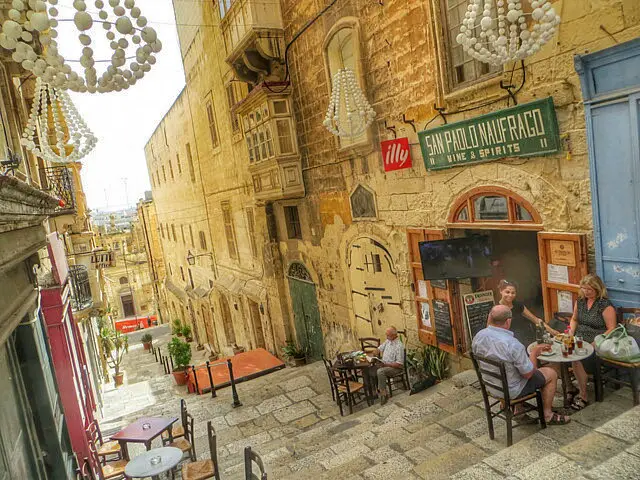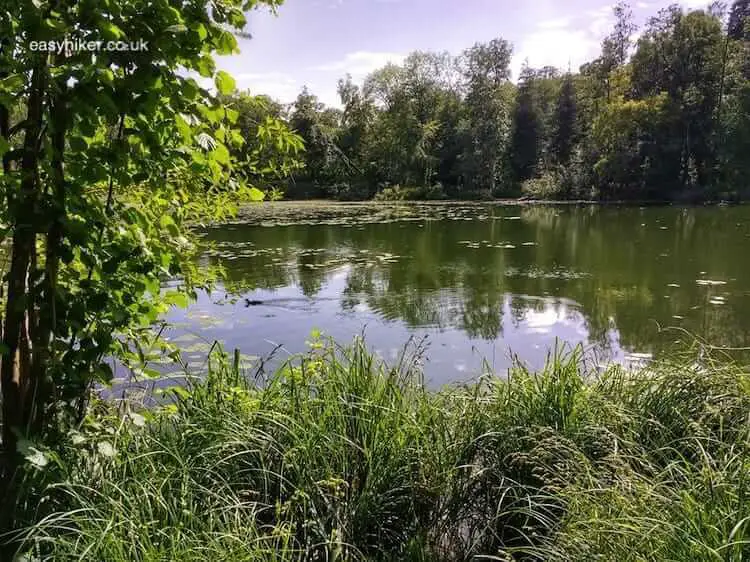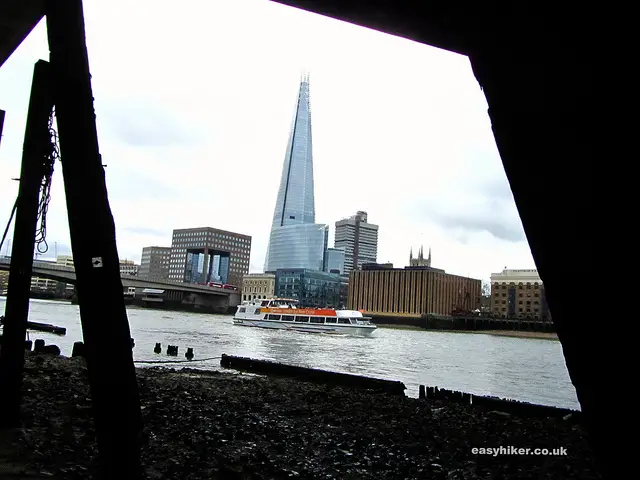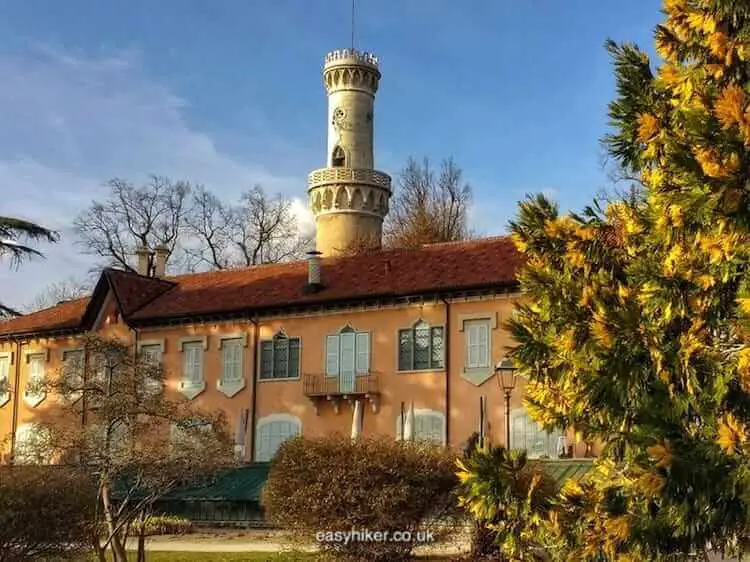There cannot be many major rivers in the world that have a proper hiking trail attached to them all the way through, from the source to the spot where they join the sea. The Thames, Britain’s most famous river, is lined by such as a “source-to-sea” footpath – which, with a total length of well over 300 kilometres, may very well be the longest such trail anywhere on our planet.

If you’ve ever visited London, there is a good chance that you have – knowingly or not – gathered some personal experience with the Thames Path. The river walk from Westminster to Tower Bridge, London’s most popular walkway: that is part of the Thames Path.
Or have you strolled alongside Embankment Gardens to Cleopatra’s Needle – and walked the brief distance from the Tate Modern to Shakespeare’s Globe? Because those two are as well.
That said, these urban sections of the Thames Path are highly uncharacteristic and unrepresentative for a 370-kilometre trail (including the extension along the Thames estuary) that mainly runs through open countryside.
But you do not need to travel hundreds of miles to find more typical and pastoral parts of the route. A short trip to the outskirts of London will do the trick.

We start our sample of the Thames Path in Richmond at the extreme southwestern corner of London’s underground network. This is where the river’s home stretch begins: from here, it flows through Central London into the estuary which joins the North Sea.
On these final kilometres, the Thames is a tidal river whose level is affected by the movements of the coastal sea waters. Before the Thames was heavily regulated in the 19th century, floodings of the path were quite common.
Nowadays, however, the river is much calmer, and the Thames Path is open every day all year round.

Richmond Riverside is an attraction in its own right as one of London’s most scenic places. Since the 1980s, it can also boast a multi-award-winning urban development whose chief designer, Quinlan Terry, became the figurehead of the traditionalist movement in architecture.
Quinlan’s Neo-Georgian style may not be everybody’s cup of tea, but the development has proved popular with the general public – and even with most critics.

This is also where Richmond is honouring its most famous citizen.

For ten years, the modernist writer Virginia Woolf and her husband Leonard lived a few blocks away from here in Hogarth House (on 34 Paradise Road) before moving to Bloomsbury in 1924. Their Richmond home also served them as the base for their legendary Hogarth Press, now a subsidiary of Penguin Random House, the publisher of Virginia Woolf’s first works and many other modernist novels and poems including the initial UK book release of T.S. Eliot’s The Waste Land.
Turning right to follow the flow of the river, the first landmark you will pass just outside Richmond is Richmond Lock and Weir, the last (furthest downstream) of the 45 locks that are still in operation to regulate the flow of the river through droughts and excessive rainfalls, high tides and low tides.

For the period between the lock’s construction in the 1890s and WWII, the walkway on top of the lock was operated as a toll bridge. People who passed from one side of the river to the other had to pay one penny. But sightseers who only climbed on top of the bridge to take a look and then went back to the same riverbank were charged twice the amount. (Brits abroad who are overcharged in taxis and restaurants should shut up: it turns out that it was them, after all, who invented the “tourists’ surcharge”.)

Shortly behind the bridge, the small town of Isleworth will appear on the far side of the river, behind the tip of Isleworth Ait. This river island provides a home for many rare species of birds as well as other animals and is one of the few protected nature reserves within the boundaries of Greater London.

A little further down the trail, you can catch a glimpse of Syon House on the far bank of the river, …

… which is one of the few stately mansions in London that still serves as an aristocratic residence: the Duke of Northumberland resides here when staying in the capital.
The most famous scion of the family was Henry Percy who led a rebellion against the rule of King Henry IV in the 15th century and was immortalised twice: first by William Shakespeare in his play Henry IV Part One, then by the London football team that assumed (and still carries) his nickname of “Hotspur”.
Syon House is also one of Hollywood’s favourite Ye-Old-England-mansions: movies such as Robert Altman’s Gosford Park, King Ralph (featuring John Goodman in irrepressible form) and the Oscar-nominated The Wings Of A Dove were shot in the palace and its gardens. Not, however, The Favourite (which won Olivia Colman an Oscar for her portrayal of Queen Anne), although this was the actual scene for many of the events on which the film was based.
In the late 17th century, Syon House was the residence of the (then) Princess Anne and the love nest for her trysts with the Countess of Marlborough, her cousin and closest advisor.
On the near side of the river, keep your eyes open for the Royal Botanical Gardens and another palace with a royal past: Kew Palace. This is the royal residence where King George III – who sat on the throne when the North American colonies fought the English for their independence – was treated during his slow descent into madness.

The story is told by the excellent British movie The Madness Of King George – which was, incidentally, also shot at Syon House. Originally, this section of the riverbank was lined by an entire compound of royal palaces, but the only building still standing today is the relatively modest Dutch House, used at the time mainly as a school building for the king’s children. Briefly, however, it also served King George as a residence in 1804.
At this stage of the walk, the skyline of modern Brentford will already appear on the horizon …

… and, once you have passed the island of Brentford Ait, cross Kew Bridge to walk towards Kew Bridge station from where you can catch a train back to Central London.
The Thames and the buildings on its banks look so different from the scenery at Richmond, but arguably exude an urban charm all of their own.

Our hike down the Thames Path also provided us with a great opportunity to parade our brand-new adidas gear. While Mrs. Easy Hiker demonstrated how well her all-adidas outfit – trainers, pants, rain jacket – blended in with London’s autumnal palette, …

… I confined myself to the footwear (very comfortable on a short, semi-urban hike) because I had to leave my favorite piece of adidas gear at home: reluctantly conceding that London in the late autumn was not the right place to run around in a pair of shorts.
Where we live, however (in the south of France), shorts are a vital clothing item on walks for much of the year, at least from June to September and possibly beyond. (How do you call a man in long trousers during the Riviera summer? The defendant.)
I once owned a rival product, made by a well-known sportswear manufacturer. They looked okay, but stuff kept falling out of my front pockets, and the fastening strings regularly formed annoyingly tight knots that took ages to loosen and untangle. My adidas shorts, conversely, have pockets that can be closed with a zip, and the drawstrings have a smooth surface so that even someone like me – combining extreme clumsiness with fits of nervous impatience – can unfasten them in seconds.
So, unnamed-but-renowned sports manufacturer: what was so difficult about that? Trust the Germans to engineer everything to perfection, fancy cars and fancy kitchens as well as seemingly humble articles such as a pair of shorts.
This may have been our last assignment as adidas ambassadors, but we shall continue to wear and happily display our gear for, hopefully, a long time to come.






